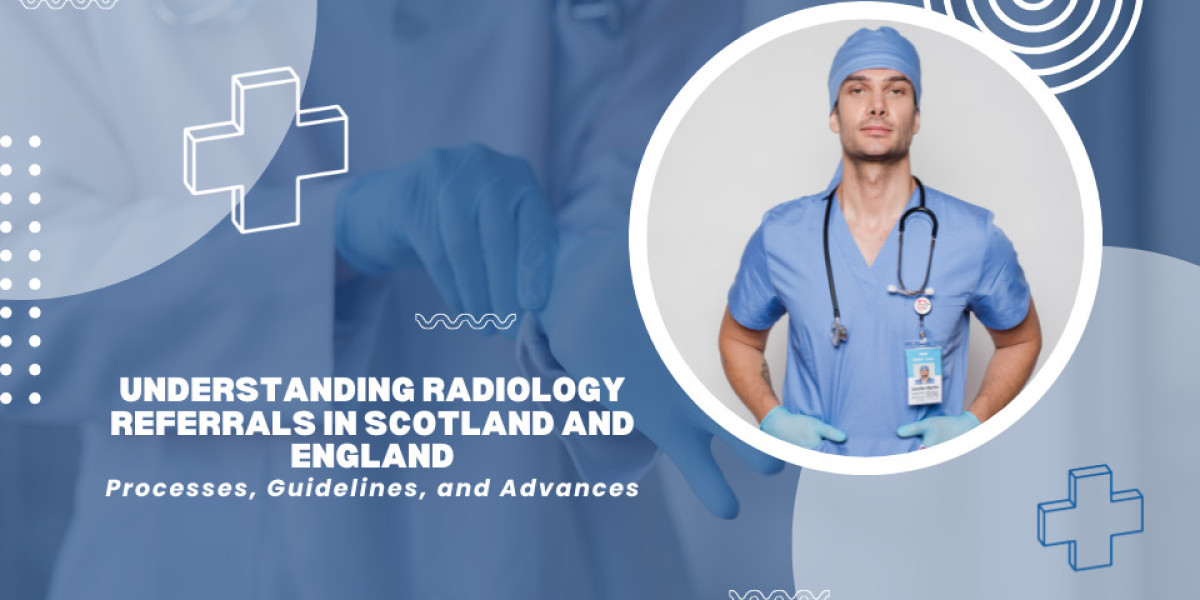Radiology referrals play a vital role in modern healthcare, serving as the gateway for patients to access essential diagnostic imaging services. In Scotland and England, the processes and guidelines governing radiology referrals are shaped by national standards, technological advances, and regulatory frameworks to ensure patient safety, appropriate use of resources, and timely diagnosis. This blog explores the radiology referral landscape in both countries, highlighting the referral pathways, key clinical guidelines, advances like telehealth and online consultations, and the evolving role of healthcare professionals.
Radiology Referral Processes in Scotland and England
In Scotland, radiology referrals originate primarily from General Practitioners (GPs), medical practitioners, and accredited healthcare professionals such as specialist nurses and allied health professionals who have appropriate training and authorization. Patients cannot self-refer; instead, referrals are made based on clinical assessment and follow national imaging pathways. For example, the Scottish Imaging Network supports direct access referrals by GPs for cancer-related imaging and other clinical indications, ensuring timely access to diagnostic services. Referrals are typically submitted electronically, facilitating efficient communication between primary and secondary care.
England follows a similar model, requiring radiology referrals to come from a GP or a registered healthcare professional. Electronic referral systems such as Clinisys ICE Order Communications System (OCS) are widely used to submit, track, and manage radiology requests in England's NHS. This approach helps prioritize urgent cases, streamline patient pathways, and reduce delays in diagnostic imaging. To ensure appropriateness, referrals are often vetted, and where uncertainty exists, radiologists or specialized clinical decision support systems contribute to validating requests.
Referral Guidelines and Clinical Decision Support
Both countries rely heavily on the Royal College of Radiologists’ iRefer guidelines, a comprehensive evidence-based resource designed to assist referrers in choosing the most appropriate imaging tests. These guidelines help avoid unnecessary radiation exposure, reduce inappropriate investigations, and support patient safety. In Scotland, the Clinical Decision Support (CDS) tool integrating iRefer guidance has been piloted to optimize referrals, improve diagnostic yield, and manage increasing demand on imaging services. Although COVID-19 and technical challenges delayed national deployment, local pilots continue, demonstrating potential benefits like cost savings and increased efficiency.
Regulatory and safety frameworks such as the Ionising Radiation (Medical Exposure) Regulations (IR(ME)R) 2018 and subsequent updates mandate that all radiology referrals be justified by an authorized referrer who ensures the clinical need outweighs the risks of radiation. These regulations are fundamental in both Scotland and England, emphasizing the need for clear clinical information, proper patient identification, and documentation in all referrals to uphold high standards of radiological protection and patient safety.
Telehealth and Online Doctor Consultations
The rise of telehealth has significantly influenced how patients access healthcare consultations and referrals in Scotland and England. Scotland has embraced telehealth as part of its Digital Health and Care Strategy, with video consultations and remote clinical assessments becoming more common within the NHS. NHS 24 and the Technology-Enabled Care Programme have driven the adoption of video consultation services, improving access to clinicians in rural and remote areas and enhancing patient convenience.
Online GP consultations in England are widely available, allowing patients to consult doctors virtually for a broad range of health issues. Services like LloydsPharmacy Online Doctor provide accessible and safe video consultations with GMC-registered doctors, enabling diagnosis, treatment advice, and issuing prescriptions or referrals where appropriate.
For patients in Scotland, private online GP consultations are also offered by services such as Medicspot, which enable video consultations with NHS-registered doctors and provide prescriptions, referrals, and sick notes remotely. These services complement traditional healthcare by reducing waiting times and increasing convenience for patients in urban areas like Edinburgh and Glasgow.
Evolving Roles in Referral Authority
There is growing recognition in both countries of expanding referral rights to healthcare professionals beyond GPs to workers in advanced practice roles, including specialist nurses, physiotherapists, and other allied health professionals. This is intended to improve patient pathways by enabling faster access to diagnostic imaging without compromising clinical governance. New guidelines emphasize ensuring that such professionals receive adequate clinical imaging training and have defined scopes of practice with clear accountability.
Practical Considerations for Patients and Referrers
Patients seeking radiology services must obtain referrals from authorized healthcare providers. While walk-in X-ray services exist in some parts of England for GP-referred patients, most advanced imaging tests require scheduled appointments coordinated through the referring clinician or radiology department. In Scotland, after referral submission, patients may need to arrange appointment bookings directly with radiology services, depending on local processes.
Referrers are encouraged to use electronic systems wherever possible to submit complete and accurate referral information to ensure smooth processing. Systems that integrate decision support help guarantee that patients are referred for the right diagnostic exams the first time, reducing repeat imaging and exposure to unnecessary radiation.
Conclusion
Radiology referrals in Scotland and England are governed by well-established procedures and guidelines designed to ensure safe, efficient, and equitable access to diagnostic imaging. The adoption of clinical decision support tools, electronic referral systems, and telehealth consultations are transforming referral practices, enhancing patient experience while managing increasing demand. Expanding referral rights to advanced practice clinicians further supports timely access to imaging. Together, these advances contribute to improved diagnostic pathways, quality patient care, and optimized use of radiology resources across both nations.



